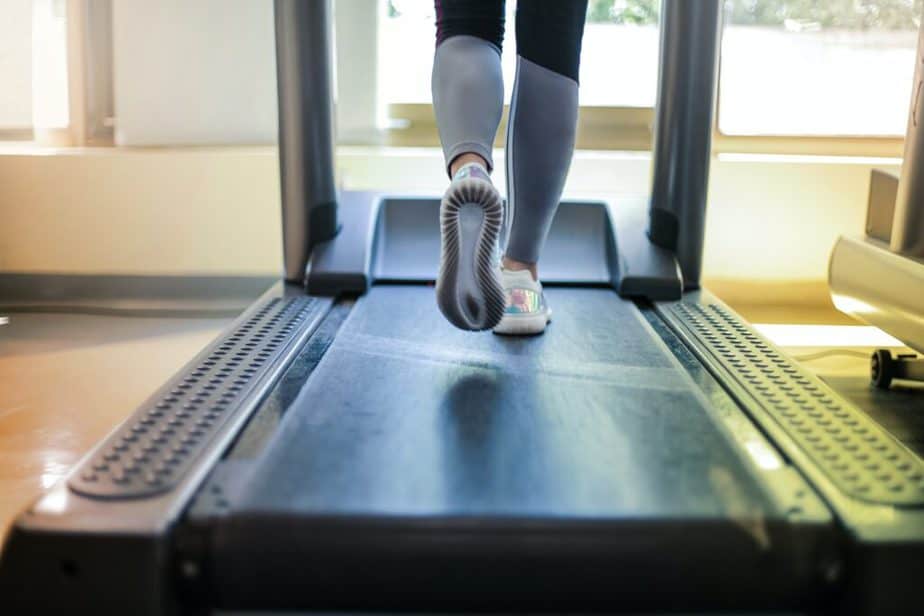Which one is Best? Outdoor running or Treadmill running?
One Important subject draws a wide range of responses among runners: Which one is best? Outdoor running or Treadmill running?
Table of Contents
ToggleBoth techniques are based on a passion for running. Some outdoor runners, on the other hand, consider that treadmill running is tedious and dull, whereas treadmill runners may enjoy jogging in a controlled atmosphere.
Fortunately, both types of running can help you. Personally, I love to run outside, because I believe running outside is the best, but you may think differently.
This article compares the benefits and drawbacks of treadmill vs outdoor running to help you determine which is right for you.
Outdoor Running:
There are numerous advantages to running outside, ranging from being outdoors with nature to people watching. Running outside on a trail, route, sidewalk, or any other outside terrain is known as outdoor running.
Benefits of outdoor running
1. You get some fresh air and sunlight
Spending time outside can make you happy, and studies suggest that it is beneficial to our health. For starters, being outside will provide you with your daily amount of vitamin D. (something many people lack enough of).
Aside from that, getting some fresh air has been shown to alleviate tension and anxiety.
Surprisingly, a 2016 study discovered that spending at least 30 minutes each week in natural greenery, such as parks and forests, could reduce sadness by 7% and high blood pressure by 9%.
2. You will Enjoy the running
Your body performs the same thing on a treadmill as it does on a sidewalk, but it feels exponentially more difficult on a treadmill. For most people, the treadmill is merely a mental exercise.
Personally, I can’t do more than 20 minutes on a treadmill without feeling like I’m going to emotionally implode. Podcasts and good music can help, but jogging outside is unquestionably more enjoyable.
Think about running with the wind at your back—it will make running feel easier.
3. You will run longer and farther
Because running outside is less boring than running on a treadmill, you may naturally run more. When your only concentration isn’t the pain in your legs and lungs, it’s simpler to keep going.
You’ll have distractions to take your mind off the physical exertion when you’re outside, such as the weather, your view, sounds, fellow pedestrians, and automobiles. Running outside may urge you to run farther, which is a simple approach to enhance your endurance.
4. You have more scope for development
Running outside as opposed to on a treadmill provides a more natural opportunity for improvement in strength, coordination, technique, and endurance.
If you live near hills or mountains, for example, jogging paths with inclines, dips, and switchbacks will push your legs more (sure, most treadmills offer incline elements, but they’re restricted compared to what you’ll experience in nature).
Trail running allows you to improve your coordination and awareness abilities by forcing you to be aware of and avoid tree roots, loose pebbles, and other obstacles that come with difficult terrain (be sure to buy trail running shoes for extra traction).
Furthermore, because you’re jogging on tougher terrain, research shows that running outside can help you create stronger bones. This increases the gravitational force and stress on the bones, which is necessary for bone metabolism.
5. Road racers will get sport-specific training
Running outside will condition your muscles and joints for the varied terrain you’ll encounter in a race.
Train on a track, road, or trail depending on your race, and you can closely mimic your final race conditions. You’ll be better able to adjust to variations in weather and know when to push harder when confronted with elevations or known barriers.
6. Running outdoor is inexpensive
Running outside is free, and you are not restricted by a gym’s schedule or machine availability. Running outside does not necessitate the purchase of a gym membership or a treadmill.
If you eliminate the cost of running shoes and training equipment, outdoor running is entirely free. This makes running more affordable for people of all income levels.
Disadvantages of Outdoor running:
1. You are dependent on weather conditions
Whether you’re jogging in the winter or summer, bad weather can strike at any time, leaving you running in the rain or snow. Furthermore, running outside means you’re keeping an eye on the heat and humidity index to avoid heat exhaustion during the hot summer months.
2. There is a possibility of injury
Knee injuries are by far the most common, according to a study from the University of Applied Sciences in the Netherlands, followed by lower leg, foot, and ankle injuries, in that order.
During an outdoor running path, you may encounter diverse and uneven terrain, thereby increasing your risk of injury.
3. It can be dangerous sometimes
In addition to overuse injuries, there are other hazards outside that can be harmful if we are not paying attention. Such as falls, running during darkness, Vehicles and bicycles, pets on road, and other people.
Treadmill Running:
A treadmill is a type of workout machine that has a spinning belt that you can walk or run on. Treadmills are available at most gyms, or you may buy one yourself in stores or online.
Treadmills are among the most popular pieces of cardiovascular equipment, both at home and in gyms, due to the numerous benefits they provide.
Even if you burn more calories or have a greater heart rate indoors, the perceived exertion of running indoors will be less than running outdoors on a rainy day. Running up a hill on a hot, sunny day may be seen as “harder” than running at the same incline and distance on a treadmill.
Benefits of Treadmill Running
1. There are no weather or temperature restrictions
Running in adverse weather is unpleasant, even if you dress appropriately. There is a risk of dehydration or heat exhaustion in hot temperatures. It’s also dangerous to run on snow and ice. You avoid these discomforts and risks by exercising on a treadmill inside.
When you run at home or at the gym, you are in a climate-controlled facility and are protected from severe weather. You also don’t have to worry about sunscreen or over-or under-dressing and being stranded far from home without the proper equipment.
2. You Have Control Over Your Pace
It can be tough to maintain a regular pace outside. As a result, if you are recovering from an injury, treadmill exercise may be an excellent option. The treadmill allows you to easily track your distance and pace.
You can also pause at any time. However, you can also use the treadmill speed to motivate yourself.
3. Race Conditions Can Be Simulated
If you’re training for a hilly marathon and don’t have access to a mountainous training course, you can run hills on the treadmill. Examine the course and organize your treadmill hills to coincide with the right points.
You may even use treadmill runs to try on race day apparel and ensure that your gear is comfortable for you.
4. You can use it at your convenience
Home treadmills allow you to run on your own schedule, even if the weather is terrible, it’s late at night, or you need to keep a watch on your children.
It is safe to listen to music or podcasts on a treadmill while using headphones. You can watch television or read a magazine or book.
Running on a treadmill indoors eliminates the risks associated with running outside.
It’s also safer than running outside without a running buddy or group.
5. Treadmill Easier on the Joints
Treadmills absorb shock better than pavement or highways, putting less strain on the ankles and knees. When you run at an incline on the treadmill, you gain strength and endurance in the same way that you would if you ran hills outside.
But you don’t have to go downhill, which might be taxing on your body.
Disadvantages of Treadmill running
1. You can't go downhill, and you can't turn
Most treadmills lack a downward slope component, which is necessary for strengthening the anterior tibialis muscles in the front of your legs. If you’re preparing for a race with a lot of elevation changes, you should also prepare for the downhill sections of the course.
A treadmill, similarly, has no twists, limiting your potential to increase your lateral agility.
2. You Can Still Get Hurt
While most users believe that treadmills are the safest alternative, the CPSC states that over 24,000 treadmill-related injuries occur in the United States each year.
These include sprains, falls, head injuries2, and cardiovascular problems in those who either ran too fast or pushed themselves too hard. (However, the figures for outdoor runners are significantly higher.)
3. It can be boring
Even with music or television to keep you company, running on a treadmill for an extended amount of time can be exhausting. Treadmills are wonderful for short interval runs or speed training, but they may be rather tedious for lengthy runs.
Making a Decision
If your only goal is to achieve and maintain your cardiovascular fitness goals, a treadmill may be all you need. You may push yourself correctly while staying well within your maximal heart rate by combining the exercise with an accurate pulse monitor (MHR).
Running outside, on the other hand, will certainly benefit you more when training for a race event. While treadmill running can help improve your cardio fitness, experts generally recommend restricting it to no more than 40% of your overall exercise.
Running on a treadmill or outside does not have to be an either-or proposition. Choose the ideal route for you when you lace up your shoes and get rolling. A combination of both may work for you, and if it’s realistic and suits your schedule, you’ll benefit from both.


